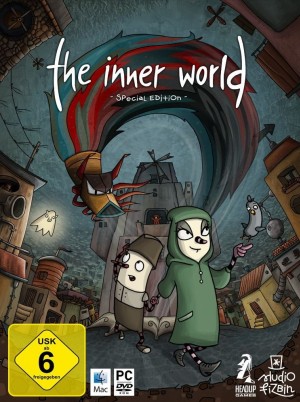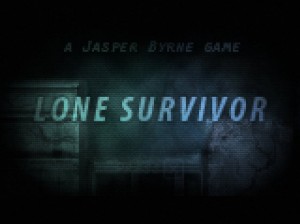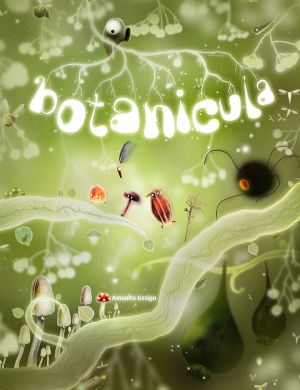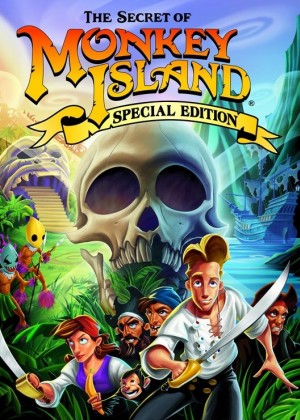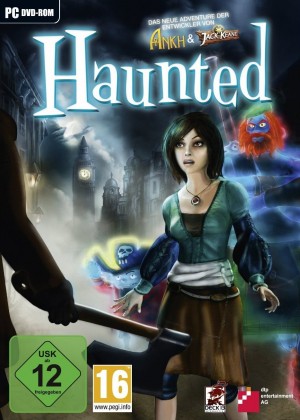Gamescom round-up: The Raven and The Inner World archived preview
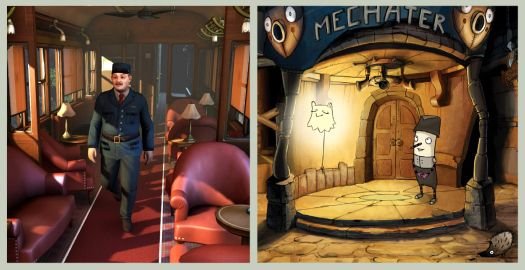
The Raven
KING Art's new game The Raven was announced only a couple of days before the gamescom, but Jan Theysen and his team had already prepared a few playable scenes to show the press. After two games in the Unwritten Tales world, they wanted to do a big new adventure but instead of a fantasy setting they have opted for a crime theme, in the vein of whodunnit detective stories like Agatha Christie's mixed with heist tales like The Sting or The Usual Suspects. They have been toying with this idea for three or four years now, and finally started production three months ago.
The Raven is set in the 1960s and will feature two playable characters, offering points of view from both a notorious thief and the detective who's after him. Some scenes will even be shown twice so that you really experience both sides of the story, and certain things you see as one character will only make complete sense after you've seen the other's version of events.
The titular Raven was a master thief who was killed while being apprehended some time ago. His trademark was a black feather that he left at crime scenes. When similar feathers begin showing up after thefts once more, the question is whether this is a copycat or perhaps a mistake was made when the Raven was thought to have been eliminated. The priceless 'Eye of the Sphinx' was among the treasures recently stolen, so when its twin is set to travel to Cairo for display in the Egyptian Museum, a guard must accompany the jewel during its journey by train through Switzerland and then by boat across the Mediterranean.
In the short demo we were shown two locations, both from the perspective of the guard. In the first scene he was reading a book on the train, but a little boy with a plastic gun was trying everything to get his attention. Several options were available to the player, including chasing the kid away. Jan chose to stick out his tongue and ask what he needed such a dangerous weapon for. We then skipped ahead to a search through someone's luggage, showing how to move the camera while looking at objects, for instance to examine a violin case from several angles to discover small objects hidden inside. A later scene showed the same guard now having arrived at the Egyptian Museum and inspecting some statues there. This scene looked very dynamic, with fast camera changes and many animated details and lively backgrounds.

Apart from the three major locations (the train, the ship, and the museum, each consisting of several sub-locations), there will be a number of smaller ones like a train station and a village to explore. The game will incorporate a gameplay style mixture of Black Mirror 2 (which the team also worked on at one point) and The Book of Unwritten Tales, taking the best of both games so that it is suitable for both beginners and veteran adventure players. Its controls are point-and-click, but with a limited inventory. If you're carrying a large item like an axe, it will stay in your hand and not disappear down your trouser pockets, and you won't be able to do other things with that hand while holding it. There will be a diary function that shows the current 'quests' you are performing and you should also be able to get clues if you're stuck.
The Raven will be developed in realtime 3D, and KING Art's completely revamped engine will allow for multi-platform development and more freedom of camera movement. For now the game has been announced for PC and Mac, but consoles are certainly an option. The release is planned for 2013, and the length of the game is estimated at 15 to 20 hours. It's quite a change from the developer's fantasy-themed games, but it certainly sounds like an interesting concept, and based on what I witnessed in Cologne, I already can't wait to see more.
The Inner World
The Inner World started out as an exam project for a few students (Sebastian Mittag, Mareike Ottrand and Alexander Pieper) at the Institution for Animation of the film academy Baden-Wuerttemberg and the Ravensburg-Weingarten College. After graduating, they started Studio Fizbin and continued development, and now that the game is progressing nicely they have secured a contract with a publisher, Headup Games. At the gamescom, Sebastien and Mareike showed The Inner World on the iPad, the primary platform for the game. Studio Fizbin has created their own engine for the game and their goal is for it to feel like a playable cartoon.
The story takes place in the kingdom of Asposia, set inside a large underground hollow. It's a curious world that isn't always logical and doesn't particularly obey the known laws of science. The inhabitants of Asposia have long, striped noses and they live their peaceful lives in a beautiful land full of fertile soil. The world has long been ventilated by a trio of gigantic wind tunnels, which they revere as wind gods. Suddenly, two of the wind fountains stop working one after the other, and the third is clearly dying out. The Asposian technology, including the light- and warmth-emitting floating creatures fosfoses, is entirely dependant on wind energy, and is now in jeopardy of failing altogether.
The developers don't want to reveal too much beyond the basic premise just yet, but the protagonist of the game is Robert, a naive young man who has lived his whole life in a castle with his uncle Conroy, a wind priest. Robert has a flute unusually (even for Asposians) built into his nose, and he would use a match to check if there's any petrol left in the fuel tank. Not a very likely hero, but as it turns out he is the only one who can save his world. In the demo we were shown, Robert had to catch a pigeon that had stolen something from him through a series of little puzzles involving finding and combining objects and talking to people. After an unfortunate mishap drives him out of the castle and into the nearest city, he must team up with a thief named Laura to succeed in an environment unknown to him.

The full game will have five chapters offering six-plus hours of comedic gameplay, though we only got to see bits and pieces from the beginning, like Robert’s encounter with a blackmarketeer who sells trash under his jacket, and trying to catch an earthworm by intoxicating it. To help players along, the game has a contextual hint system with three layers. The first hint is really general, and will only tell you what area you should investigate further, the second will tell you in more detail what the goal of the puzzle is, and the third one will give you the solution outright. The puzzles shown in the demo didn't seem to be particularly taxing, so hopefully the difficulty level will be cranked up somewhat later in the game.
The graphics are hand-drawn, classical 2D, designed in a cute style filled with countless little details. The artwork is lovely and twisted at the same time, with pipes and gears of various size in a run-down environment that has a bit of a Machinarium feel, which was one of the developers' inspirations. Often when you solve (part of) a puzzle, a cutscene shows the action close up.

The first chapter is situated in Robert's hometown, and after that the world opens up to be explored. There will be 22 locations that consist of several screens each, and when you move the character around parallax scrolling reveals more of that area. A mechanical theater, a bar and a forest are just some of the promised locations. You'll interact with a variety of characters through dialogues that are theme-based, showing icons representing the subjects available. The game will be fully voiced, using a clever but basic vocal system that recognizes the level of sound to open or close the mouth of the speaking character automatically, which should make for easier localisation.
On the iPad, interaction is touch-based and intuitive. Simply touching an object will result in Robert describing it and then interacting with it if applicable, for instance picking it up or opening it. Holding an object and releasing it on top of something else will make Robert try to combine them. Keeping your finger on the screen reveals all the hotspots that you can interact with, many of which are optional and only provide more background information about Asposia. The PC version is still in development, but we were told we can expect a similar easy-to-use interface. The cute characters and interesting premise certainly looked appealing, but the wait to see more will be a little longer yet, as The Inner World will be available on PC, Mac, and iOS in the second quarter of 2013.
Leho Lahtvee contributed to The Inner World article.




